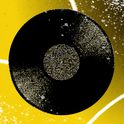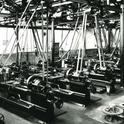Did you know that diamonds are “lipophilic”—that is, they are attracted to fat and grease? That “jade” is a name that applies to two (completely different) types of stone? That sapphires are not necessarily blue; indeed, they run from “peachy orange” to “near black”—and that red sapphires are known to us by another name, “rubies”?
In her beautifully produced book Lapidarium, art critic Hettie Judah offers a cornucopia of stories about stone, many of them strange and surprising. Made up of a series of 60 brief essays—each focused on a different rock, from basalt to obsidian, tuff to turquoise—this is a book to be dipped into whenever the mood takes you, reminiscent of Kassia St Clair’s The Secret Lives of Colour.
“Great gems are valued for gossipy, scandalous history as well as their beauty,” Judah tells us, offering up tales of cursed jewels, notorious fakes and “petromaniacs” who have bankrupted themselves over their thirst for precious stones. But Judah does well to capture too the beauty of her glistering subject matter: pink ancaster, as sculpted by Barbara Hepworth, is “a dilute membranous pink,” she writes, “the colour of connective tissue”; garnets “have the juicy lustre of pomegranate seeds”; while bloodstone is “like a dark mound of wilted spinach flecked with red chilli”.
Judah’s playful approach stretches the bounds of what one might think of as “stone”. We take minor detours via calculi (bodily deposits like bladder and kidney stones), coprolite (“petrified poo”) and Coade stone (a type of white terracotta, popular among Georgian architects). But these short, readable entries offer the general reader snapshots from the history of crystallography; an introduction to “deep time”; and an explainer for how the international trade in rare minerals destabilises developing countries. It is a charming book, full of surprising insight.













